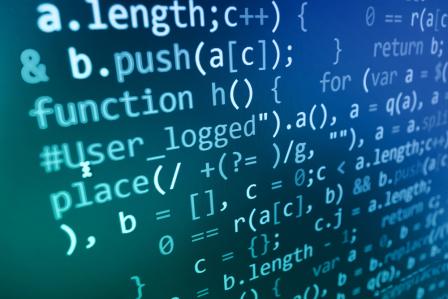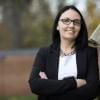Women in Science: Ada Lovelace, the First Computer Programmer
Computers streamline everything we do, from making our grocery list to checking the weather. With the Apple iOS Store adding ~20,000 apps per month, more and more of us are trying our hand at computer programming. But who was the first computer programmer?
These days, we back up every email we send without even thinking about it, and we look to our computers to tell us the weather rather than looking outside. Today’s teenagers will never know a world without Twitter. At the age of two, my toddler already knows how to start up her favorite videos on my smart phone (the ones of herself, naturally).
With the Apple iOS Store adding ~20,000 apps per month, coders all over the world are turning computational problems into executable computer programs ranging from the simple to the extremely complex. But who was the first to do so?
The First Computer Programmer
Lady Ada Lovelace, born in 1815, is considered by many to be the first computer programmer. Her mother Annabella Milbanke fostered an interest in logic problems and mathematics with Ada from a young age—supposedly to combat the influence of what she saw as the volatile and erratic temperament of Ada’s father, the poet Lord Byron. Lord Byron is said to have been disappointed that Ada was not a son and left both her and her mother only months after Ada was born.
Ada’s upbringing was very unusual for a young girl in the aristocracy in the 1800s. She had tutors in mathematics and science, including Mary Somerville, a Scottish astronomer who became the first woman admitted to the Royal Astronomical Society.
The First Computers
As an adult, Ada developed a friendship and working relationship with the mathematician and inventor Charles Babbage. In 1822, Babbage had proposed a design for what he called a Difference Engine, a mechanical calculator for tabulating polynomial functions. Such a machine, used by engineers, scientists, and navigators, would have been a significant economical advancement on the work of human data manipulation (so-called “human computers”), which required large amounts of time and introduced unavoidable human error into the computations.
Although in 1991, a perfectly functional version of Babbage’s difference engine was built from his original plans, Babbage was never able to produce a working difference engine himself. While the British government’s funding of Babbage was motivated by economics, Babbage himself was more driven by the possibility of pushing his invention to the next level. Before completion of the difference engine, he became distracted by designs for an Analytical Engine, a machine meant to extend the applicability of the difference engine and that would become the first general purpose computer.
Ada too was fascinated by Babbage’s plans for the Analytical Engine, and in 1843, she translated a description of the machine written by the Italian mathematician Luigi Menabrea. Babbage felt that Ada truly understood the complexity of the engine, far beyond other scientists at the time, and so asked her to include with her translation her own notes on its design and potential. Those notes, which became larger than the original work itself, were published in the Scientific Memoirs journal and included methods for using the machine to perform example computations. These methods, which would have worked had the machine ever been built, are considered the first computer programs.
Ada saw the potential applications for the Analytical Engine even beyond Babbage’s initial proposal, but dismissed the suggestion that it would in any way lead to the development of artificial intelligence. Her notes included the remark that the engine had “no power of anticipating any analytical relations or truths,” an idea that remains a strong point of contention today.
Charles Babbage and his engineers were never able to build the Analytic Engine, due in part to inadequate funding. Although he first proposed the machine in 1837, the first general purpose computers were not built until more than a century later in the 1940s.
Ada Lovelace Day and Support for Women in STEM
Ada died of uterine cancer at the age of 36, only a few short years after her work on the first computer programs was published. Every year since 2009, October 13th is celebrated as Ada Lovelace Day, in recognition of her contributions to the field of computer programming and of her potential cut short.
Ada’s brief career also represents the achievements made possible by fostering an interest in math and science among young girls. Still, today girls receive subtle yet constant messages starting from a young age that science is a man’s regime.
Events associated with Ada Lovelace Day celebrate the contributions from women to STEM fields including talks by some of these women showcasing their research, and online stories describing the work of many, many others. There is also an opportunity to contribute your own story of a woman in science whose story has inspired you. You can find out more about Ada Lovelace Day events, as well as about Ada herself, at findingada.com.
Other organizations, like the Ada Initiative, are also supporting women in technology by advocating for changing outmoded aspects of the STEM culture that keep women from realizing their full potential.
Until next time, this is Sabrina Stierwalt with Ask Science’s Quick and Dirty Tips for helping you make sense of science. You can become a fan of Ask Science on Facebook or follow me on Twitter, where I’m @QDTeinstein. If you have a question that you’d like to see on a future episode, send me an email at everydayeinstein@quickanddirtytips.comcreate new email.
Image courtesy of Shutterstock.
You May Also Like…







